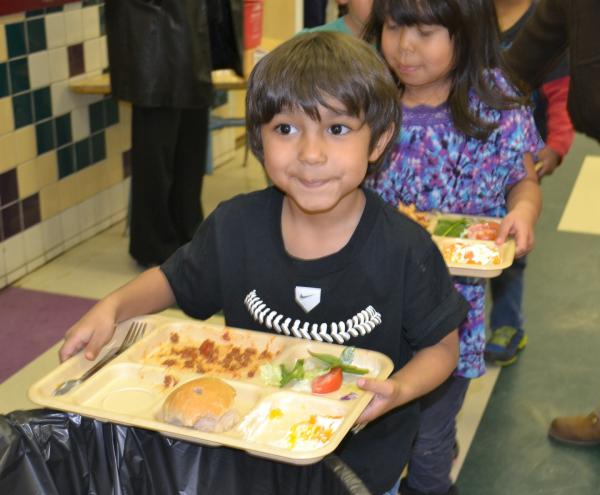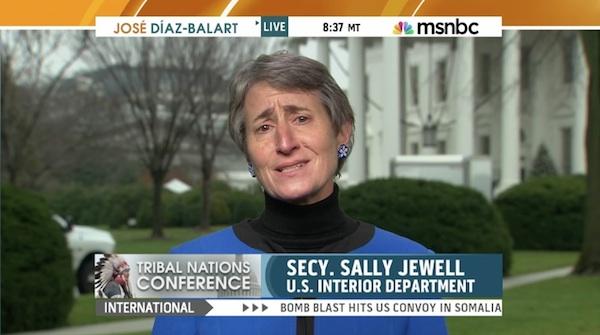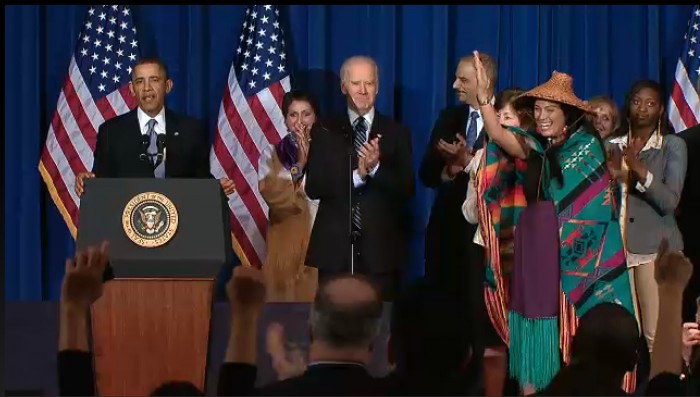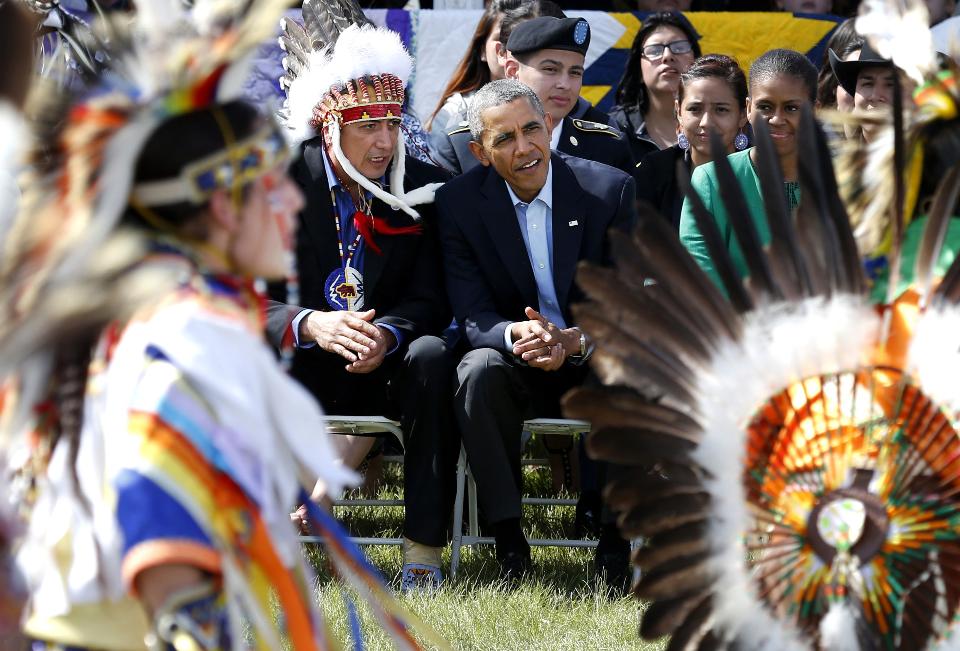Richard had made up his mind. By the time he was 16, the Yup’ik boy had been bounced around in foster care for years when he made the life-altering decision to escape. His four younger siblings had already been adopted out of the tribe, scattered among three white families, their whereabouts unknown to him and his village. But he was determined to remain a part of his community, no matter what the cost.
“The last straw came when my foster parents started hinting around and asking me how I felt about changing my name,” he recalls. “That’s when I decided that I was done. I told them that my name is Richard Lincoln III. I am the third. I am the oldest boy in my family. I was named after my father and his father. I was not going to change my name for anyone or anything. That is who I am. I didn’t want to be adopted. I wanted to go home.”
And so he walked away from foster care. Upon returning to his village, a coastal Yup’ik community on the western edge of Nelson Island in the Bering Sea, he called his foster parents and told them that he was going to stay in Tununak. From that day on, Lincoln made it a mission to find his four brothers and bring them back home as well.
Richard’s escape from a child welfare system that continues to ensnare hundreds of thousands of Indian children across the United States, and that his foster parents consented to allow him to stay with his village, is nearly unheard of. Considering that Native children usually outnumber their non-Indian counterparts by a ratio of up to 9:1 in foster care in some parts of the United States, Lincoln is one of the lucky few who managed to make it back to his home community. In spite of federal laws meant to protect the tribes, Indian children continue to be swept into foster care in non-Indian homes in huge numbers. Many are adopted out of their tribes or languish in foster care, aging out of a system that generates millions in federal subsidies for the states.
The Event Horizon
Today, Richard Lincoln III is 27 years old, and is now the ICWA worker for the Tununak Village, a position he took over in 2012, though he had no experience with the byzantine federal law and its requirements. But he did have one thing in his favor: As a Native child who had been through the never-ending carousel of foster homes and makeshift families, often feeling out of place and homesick, he understood precisely what it was like from the child’s point of view.
On his first day on the job, The Native Village of Tununak v. The State of Alaska landed on his desk, a case in which an Inupiaq grandmother has been fighting for custody of her now 6-year-old granddaughter since the girl was 4 months old.
Last September, the Alaska Supreme Court ruled against the village and the grandmother, noting that, despite the clearly defined placement preferences outlined in the Indian Child Welfare Act, neither had stepped forward to formally adopt the child known in the proceedings as “Dawn.” In its decision, the court cited points made in last year’s United States Supreme Court decision in Adoptive Couple v. Baby Girl (commonly known as the “Baby Veronica” case), as helping establish parameters behind its decision for denying Dawn’s maternal grandmother, Elise, the right to raise her granddaughter.
The ensuing outrage among tribal advocates over Tununak and the resultant headlines have put the case—now more than likely headed for another appeal—at the forefront of the efforts of Indian nations to firmly establish adherence to ICWA in states that seemingly circumvent it with few signs of improving and suffering scant legal consequence. In response to Indian Country Today Media Network’s presentation of grandmother Elise’s account of her many struggles, Assistant Attorney General Jackie Shafer of the Alaska Department of Law delivered a lengthy rebuttal to Elise’s and the village representatives’ story. (Note: the original story has been edited to reflect the fact that the mother of Baby Dawn was not ‘sent’ to Anchorage, but lived there, gave birth to Dawn, and was not moved to a rehab facility—she did not attend any in-patient treatment. Also, the reason the court rejected the state’s appeal of Tununak I hinged on a “burden of proof” requirement, and was not related to any decision in the Adoptive Couple case as originally stated.)
RELATED: Children in the Crosshairs: Alaska Native Grandmother Fights ICWA Ruling
Though many points of the case are in dispute (if they were not, there would be not disagreement), in the interest of clarity and to offer our readers the state’s position as accurately as possible, we present here the unvarnished bulk of the rebuttal. To wit:
“Early on in the case, the mother informed OCS and the grandmother that she strongly did not want the child placed with the grandmother in the village.
The statement that Dawn was placed with the Smiths after her mother went to the rehab facility is true only in the limited sense that it ignores that Dawn was placed with several other placements before the Smiths. She was removed from her mother’s care in 2008 and the Smiths were her fourth placement since birth.
Even though Elise twice visited Anchorage in 2011, she never visited Dawn during those visits, nor did she write her any letters, send photos, or call. This was despite the adoptive parents’ efforts to keep in touch with Elise.
Elise participated in Dawn’s CINA case, had access to a lawyer through Alaska Legal Services, who represented her and the Tribe for free, Elise waited over three years to tell the court that she had an interest in taking custody of Dawn.
‘Early in the case, Elise says, OCS workers came to her village to inspect her home.’ That wasn’t an OCS worker, that was someone from AVCP—the organization that represented the tribe.
· ‘She had her home cleared of some fishing equipment and made a room ready for her granddaughter.’ That is inaccurate. Even at the placement hearing she said she had not completed these things. From the Court’s opinion: “In December 2009 a representative from the Village Council Presidents visited Elise’s home on OCS’s behalf and completed a Foster Home Visit Worksheet as part of the foster-care licensing process. The report noted a number of potential hazards in the home that needed to be addressed before placement could occur, including unsecured fuel, guns, medicine, and cleaning supplies, as well as plastic bags and “clutter” in Dawn’s potential bedroom. In February 2010 OCS discussed these concerns with Elise, and she said that she planned to address them. OCS asked Elise to arrange for a second home visit once these tasks had been completed.” At the placement trial, she testified that her home was still not ready.
‘On subsequent visits the OCS workers would find other requirements.’ This is inaccurate. No one ever went to her house again because she was supposed to notify OCS when she had fixed the problems identified by AVCP. She had not yet remedied those things by the time of the placement hearing, so that is probably why she did not notify AVCP/OCS to do another home inspection.
‘Elise found him [her son] another place to live.’ That is not true. From the Court’s opinion: “Elise also testified [at the placement hearing] that her son lived in her home again and helped out with chores, such as carrying water, shopping, cooking, and subsistence hunting. According to Elise, her son could not afford to return to Anchorage to complete the required alcohol treatment program, but he did not drink anymore and alcohol was not available in the village.” The adult son living with her had a bench warrant out for his arrest. This was one of the issues that AVCP notified Elise about regarding why her home was not currently a safe place to transfer a child.
‘At the time, Elise’s husband was dying of lung cancer.’ That’s not what she testified to—at the placement hearing she said he was in remission.
‘The adoption process was moving forward with no prior notification to the child’s grandmother or her tribe.’ That is not true at all. The Tribe had been a party to the case since the beginning and received notice of all the developments in the case, including OCS’ updates to the court about Dawn’s placement and pursuing an adoption home study.
‘By the time of the placement hearing in November 2011, however, Dawn’s fate had already been determined.’ This is incorrect. The placement hearing was a major turning point in the case and involved extensive testimony and presentation of evidence by both sides. The trial court devoted an entire day to the placement hearing and issued a 20-page substantive order describing all of the evidence at the hearing. Then that decision was appealed, and Dawn’s fate has been in limbo ever since.
‘I can’t afford the legal fees to fight this.’ Alaska Legal Services Corporation represented her for free.”
Elise, the tribe and their lawyers all firmly maintain that the state and its Office of Childrens’ Services (OCS) knew full well she intended to raise her granddaughter after her daughter’s parental rights were involuntarily terminated in 2011 and that she did everything humanly possible to make that happen including applying for a foster license, which she was not legally required to do. The state contends that by failing to file adoption papers, which neither she nor the tribe were ever told they were required to do, she had not met the requirements under the placement preferences because of the outcome in the Baby Veronica case.
Both Elise and the Association of Village Council Presidents strongly take issue with the court’s findings on Elise’s efforts to properly clean and secure her home, sharing the consensus that OCS and the state had made up their minds early on about Dawn’s fate that hindered Elise’s ability to gain custody of her granddaughter. (And, regarding another of the AG’s points above, it should also be noted that Elise’s husband, in fact, later died of lung cancer.)
“They knew all along that Elise wanted her granddaughter,” says Carol Brown, general counsel for the Association of Village Council Presidents, a consortium of Alaska Native Villages. “The attorney general, the social workers, prosecutors and guardian ad litems (GALs) are all on their own track and they’re very motivated to ‘win.’ The GALs, rather than doing what’s best for the child, will just defer to the legal counsel, and many don’t even bother going to the villages to assess the families. Oftentimes, these life-changing decisions are made from afar.
“I went to a hearing once where the guardian ad litem actually forgot the name of the child he was representing. So the reality is subverted. It’s not a ‘formal’ policy, but it’s definitely a reality on the ground.”
Cori Mills, the Public Outreach Coordinator for the Alaska Office of Children’s Services, denied allegations that their social workers are told off-the-record that the state “does not follow” ICWA as previously reported in ICTMN.
“OCS closely adheres to the Indian Child Welfare Act, throughout its policy manual and as a pillar of agency culture. Supervisors do not tell staff to disregard or that we do not ‘follow ICWA’,” said Mills, via email. “ICWA compliance has been and continues to be a top priority at OCS and an issue of daily conversation. OCS conducts significant trainings on the subject, and continue to support staff to explore race, ethnicity and culture in an effort to continually improve best practices when working with Alaska’s families.”
Many of the nearly dozen Native families contacted by ICTMN for this story who have been through the state’s child welfare system, including Elise’s, vociferously deny the state’s official position on the enforcement of ICWA, citing many of their futile efforts to reunify with their children. They believe Elise’s case is only unusual in the sense that she has stood up to a system that they feel is stacked against them.
“I don’t care what the state said, they’re lying,” said Elise, upon hearing the state’s response. “That’s what they do. They lie and intentionally keep moving these kids around to different homes and make it nearly impossible for the parents to reunite with their kids. My granddaughter lived in five different homes before she was 4. Five homes. How is that more stable than being with her own grandmother and her people?”
Previously, the tribe had agreed to allow Dawn’s placement in foster care with non-Indian foster parents in Anchorage so that she could be near her birth mother while she attended outpatient rehab. But after Dawn’s birth mother lost her parental rights, the Village of Tununak, as the party in the case, argued that there was no longer “good cause” to deviate from the placement preferences outlined in section 1915 of ICWA. By then, however, Dawn had been placed in her fifth foster home with Kim and Harry Smith in Anchorage, who according to insiders within social services, had been told by OCS they would be able to “keep” Dawn if they wished to adopt her.
From the beginning, the relationship between Elise and the Smiths was tense, particularly with Mrs. Smith. According to Elise and Tarzwell, it deteriorated even further after the couple filed adoption papers for Dawn four days before the placement hearing commenced in 2012 with no prior notice to the grandmother or the village. By that point, tribal officials said they began to realize the Office of Children’s Services had never intended to return Dawn to her family or village; they say, and Elise maintains, that there was no notice to the grandmother or the village when adoption papers were filed. Over the objections of Elise and the village, the girl was adopted by the Smiths in 2012. The tribe, represented pro bono by Sydney Tarzwell and James Davis Jr. of the Alaska Legal Services Corporation, appealed the adoption to the Alaska Supreme Court.
The case is a perfect illustration, say Indian child welfare experts, of the size of the gulf of the cultural divide between Natives and non-Natives, as rural, traditional communities run up against the legal doctrines and bureaucracy of official state government. It is indicative of the emerging battle over the rights of Indian children and their tribes under the Indian Child Welfare Act that was passed in 1978 to keep families and children together. Because of the widespread diaspora in the previous centuries, in which Indian children were often rounded up en masse and shipped off to colonial mission schools and later government boarding schools, tribes lost hundreds of thousands of children who never returned to their communities.
Within one generation, languages were broken, traditions and oral histories died, ceremonies became extinct. ICWA was passed to prevent another lost generation of children. Instead, experts and tribal leaders say it has just created more tension between states and tribes, who are usually at odds over the purpose and intent of ICWA and the legal standard of what constitutes “best interest” for tribal children.
“The state plays ‘hide the ball’ when faced with issues regarding Tribal jurisdiction,” said Brown. “[And there is] frustration with the constant barrage of litigation and narrowly-construed arguments to thwart Tribes’ efforts to self-govern, as demonstrated in this case.”
The Ripple Effect of Baby Veronica on ICWA
“The Alaska Supreme Court incorrectly interpreted the Baby Veronica decision and has turned ICWA on its head,” said Troy Eid, Chairman of the Indian Law and Order Commission (ILOC), a nine-member bipartisan, volunteer panel that submitted its report, “A Roadmap for Making Native America Safer,” to the President and Congress in November 2013. In the report, Alaska is singled out among the 50 states with a stand-alone chapter outlining its poor treatment of tribes.
Eid, a former United States Attorney who is now in private practice in Denver, spent more than a month with his team visiting every section of the state whose system of governance he has characterized as “colonial” and outdated. The “Baby Dawn” case, he says, only reinforces his opinion of the state’s position on Native foster care.
“The foundational purpose of ICWA is to prevent states from improperly removing Native children from their parents, extended families, and tribes,” said Eid, whose firm represents the Association of Village Council Presidents, a consortium of Alaska Native tribes. “Nothing in ICWA—or for that matter, Baby Veronica—[says that] unless some eligible person, such as the grandmother here, has formally filed an adoption petition. This has the practical effect of gutting the statutory preferences, forcing Tribes and their citizens to file adoption petitions in order for those preferences to have any legal effect.”
This case, he maintains, returns Indian children to the pre-ICWA days when state laws presumed Native people to be unfit parents. By forcing grandparents and other family or tribal members to prove their worthiness runs headlong into the original intent and purpose of the federal law—“Even though Congress has said that the law is supposed to keep Native families together whenever possible, and not break them apart.”
Lost in Translation
Carol Brown, a member of the Lac du Flambeau Band of Lake Superior Chippewa from Wisconsin, has served as general counsel for the AVCP since 2010. Like Richard Lincoln III and Sydney Tarzwell, the Baby Dawn case came to her attention almost as soon as she hit the door at AVCP.
“We’ve been monitoring this case from the beginning,” said Brown. “When I was growing up, the Lac du Flambeau was one of the first tribes to have our own court systems. [In] Alaska and they are, through no fault of their own, 30 years behind many tribes in the lower 48. We’re past the Termination Era, but it’s like the 1950s they way they treat Indians here.”
Brown says she has witnessed many of the same problems in Alaska that tend to plague tribes in the lower 48 states: Cultural, linguistic and behavioral misunderstandings that often lead to bitter resentments and disputes between the Native inhabitants and their non-Indian neighbors.
“For example, they put out these little sheets in the Yup’ik language for the courts to use in ICWA hearings,” said Brown. “But you have to understand that there are many Yup’ik dialects and what may mean one thing to one band, may have a totally different meaning five miles away. So you can’t rely on a sheet of paper with words on it—you have to have the right interpreter in the room with the proper context of what’s actually being said.”
Brown concurred with the ILOC’s written opinion that “…the problems in Alaska are so severe and the number of Alaska Native communities affected so large, that continuing to exempt the State from national policy change is wrong. It sets Alaska apart from the progress that has become possible in the rest of Indian Country.”
On this particular point, the State of Alaska seems to agree.
“The State recognizes that the message of the report is sound, and that the State can and should be doing more to address the problems outlined in the Indian Law and Order Commission Report,” said assistant attorney general Jackie Schafer. “We are actively working on local solutions.”
Schafer pointed out that some of the solutions included negotiating “Civil Diversion Agreements” (CDA) with “several” Alaska tribes, but did not specify what, if any plans, were being made for the hundreds of other villages. Under these agreements, said Schafer, tribes would handle violations of certain state law misdemeanors and offenses in tribal court, including alcohol offenses, minor consuming or in possession offenses, as well as local option possession offenses in communities that have voted to ban alcohol, among others. But, apparently, none of the CDA’s would address specific tribal concerns with regard to the promulgation of the Indian Child Welfare Act.
In response to questions regarding the importance of self-determination and local governance that are crucial to the cohesion of tribal life, Schafer said the state is making efforts to collaborate with its tribal communities.
“Absolutely. This is one of the main reasons that the state is seeking to enter into the Civil Diversion Agreements with Alaskan tribes,” said Schafer. “One of the highest priorities of the State is to work as partners with tribes and Alaska Native communities to address the numerous challenges facing rural Alaska. The State, tribes, Alaska Native Claims Settlement Act (ANSCA) corporations, and nonprofit entities are all diligently working to improve life in Alaska’s tribal communities.”
Returning Home to the Nest
When Richard Lincoln made the decision to stay in Tununak rather than return to his foster parents, he also made another, more personal decision: To find his brothers and bring them home.
“It took until we were all adults,” said Lincoln, who searched databases, made phone calls and wrote letters, searching for four people—all of whom now had different last names. “But we all wanted to go home. All five of us.”
Richard Lincoln III is seen here with his grandparents and three children. (Richard Lincoln III)
Over the years, he managed to locate three of his brothers and bring them back to their ancestral village that sits on the Bering Sea.
“I made sure all my brothers came home—except one,” he said. “There is one still out there and I don’t even know if he’s alive. But I hope that one day we find him or he finds us. Because he is our brother. He is one of us. We want him to know we’re here, we’re home, and we’re waiting for him.”
For Lincoln, and many other Alaska Natives, the case of Baby Dawn has ignited a long simmering anger over the state’s recalcitrant attitudes toward what constitutes “best interests” for their children. But he continues his work as Tununak’s ICWA coordinator, because his tribe is small—with only about 400 members—and by now he has gained valuable experience that is crucial to the long-term survival of his people.
“This case has brought back some hard memories,” said Lincoln. “And it’s a situation that’s prevalent and it’s been this way for years—our children being adopted out to white families. But I won’t be surprised in 15 or 20 years if this little girl shows up in our village. And when she does, we will be here for her. Waiting.”





















